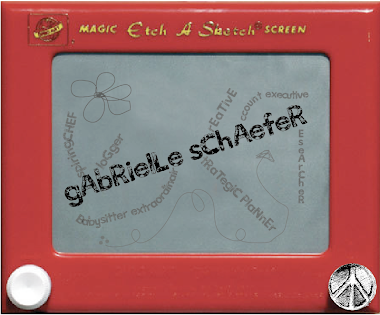Thursday, February 18, 2010
All Aboard Working World
Friday, February 12, 2010
Real Time - Weekly
Last week, Facebook became star-studded as people changed their profile pictures and filled in their status to read: “Change your profile picture to someone famous (actor, musician, athlete, etc.) you have been told you look like. After you update your profile with your twin or switched at birth photo then cut/paste this to your status.”
It was Facebook’s newest status update trend: Doppelgänger Week. Or maybe we should call it Facebook Social Media Case Study, Part II.
The last Facebook update uproar was about bra colors. The viral campaign—started by an unknown user—was meant to promote breast cancer awareness by having women change their status to the color of the bra they were wearing. The results are unknown, but the amount of impressions gained was impressive.
Critics such as Time suggest that “this was Internet slacktivism at its finest, a pointless gesture that raised no money and took no tangible action.” Yet it did garner hype and attention—just as the Doppelgänger campaign has been doing.
As Mashable points out, “the result is still both interesting and hilarious, depending on who your friends think they look like.” I didn’t notice the viral takeover until one of my girlfriends popped up as Kenny G. This was comical, as my friend’s curly red hair mimics, to a T, the musician’s old-school looks. Others are just plain debatable; after all, would the highest-paid actors in Hollywood really be what they are if they had hundreds of identical twins? Probably not.
Doppelgänger Week is different in two obvious ways from its bra-color predecessor: 1. AsTime notes, it does not support a viable cause. 2. Both genders can participate.
But it’s the same in one very interesting way: It proves that social media does operate in real time, and that it can create a communication phenomenon quickly—and globally. The current Facebook campaign, allegedly started by IT guy Bob Patel (a Tom Selleck look-alike), again shows the power of a simple viral campaign. With no microsite or cost factor, the campaign has wide participation on Facebook and is being cross-promoted on Twitter.
The bra bit and the celebrity look-alikes should count as ample preliminary research on which both marketers and corporations can base viral campaigns. It doesn’t take a million dollars and a dog-and-pony show to catch your audience’s attention. All it takes is a fun, participatory online event that the consumer wants to be associated with. In this case, who doesn’t love a good narcissistic moment or the opportunity to laugh at someone else’s?
In an interview on Facebook’s blog, Sam Gosling, professor of psychology at the University of Texas at Austin, said: “So many people are on the social networking sites. And although from the outside their activities may appear frivolous, they clearly aren’t, because so many people devote so much time and psychological energy to them.”
So, although Time might think these campaigns are examples of slacker-activism, they possess immense value because of the psychological energy that consumers invest.
Ultimately, the goal of any online campaign is to create buzz around a message in order to lead to a measurable result—profit, awareness, donations, etc. The bra color campaign might not have been initiated by a breast cancer–related organization, but it did create a global conversation among many of the 325 million (and counting) people on Facebook about breast cancer awareness. Likewise, the Doppelgänger campaign might not seem to have a practical purpose, but it drove millions of users to MyHeritage.com, a family tree site with an application that allows you to find celebrities that resemble you.
It’s rumored that the next big thing is going to be Urban Dictionary Week, when people will go to Urbandictionary.com to find what their name means according to this street-lingo-wise dictionary and post the definition as their Facebook status.
This might be a trend that consumers tire of, or it could become something that people look forward to each week. If that’s the case, the pioneers of grassroots weekly status campaigns and what Time calls “Facebook groupthink” have opened up a whole new bag of social media tricks that will become a coveted tool for marketers. Facebook’s growing population and the word-of-mouth buzz that its traffic creates just might have brands and causes competing for the limelight at the start of every week.
Mine:
Mine
